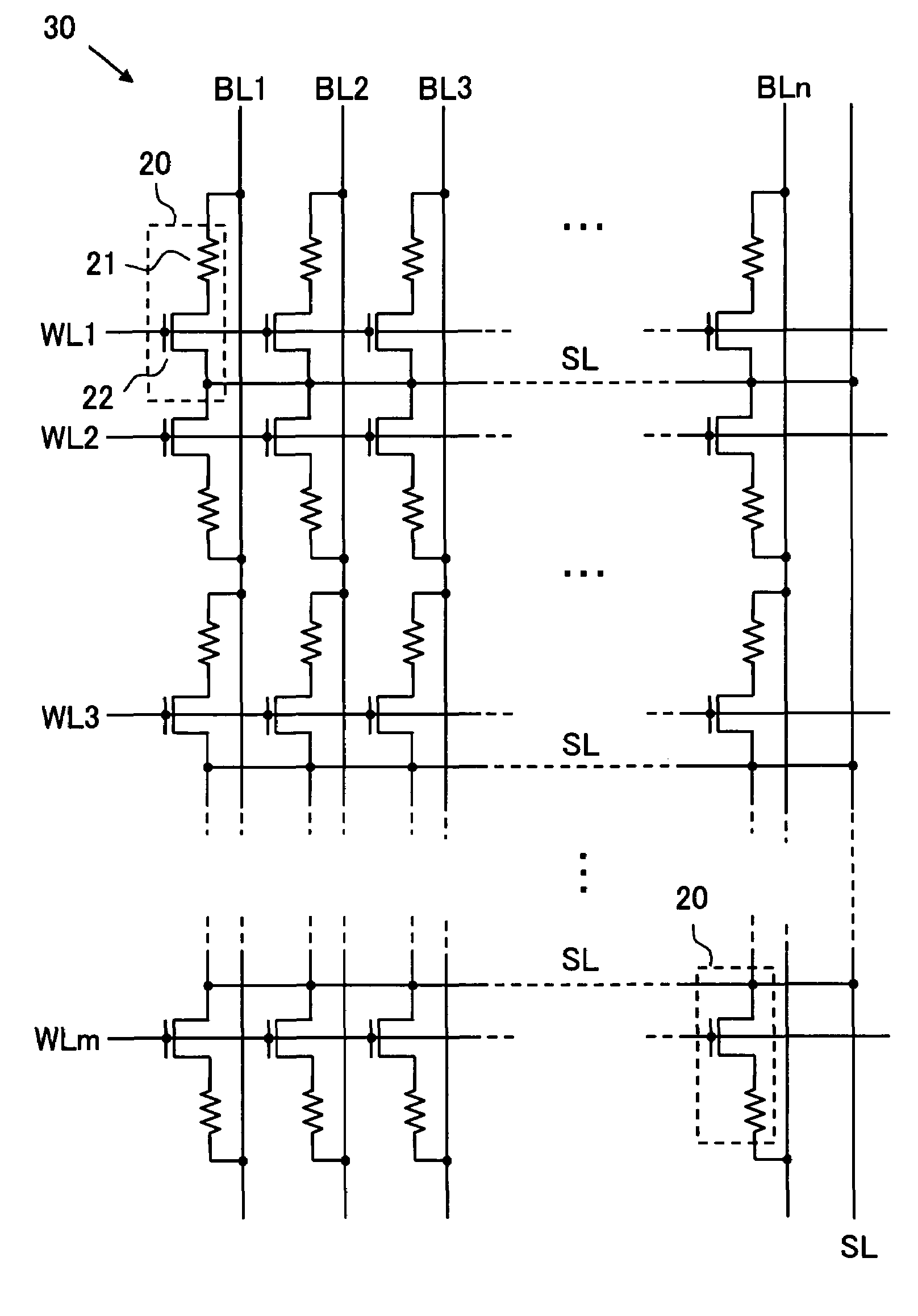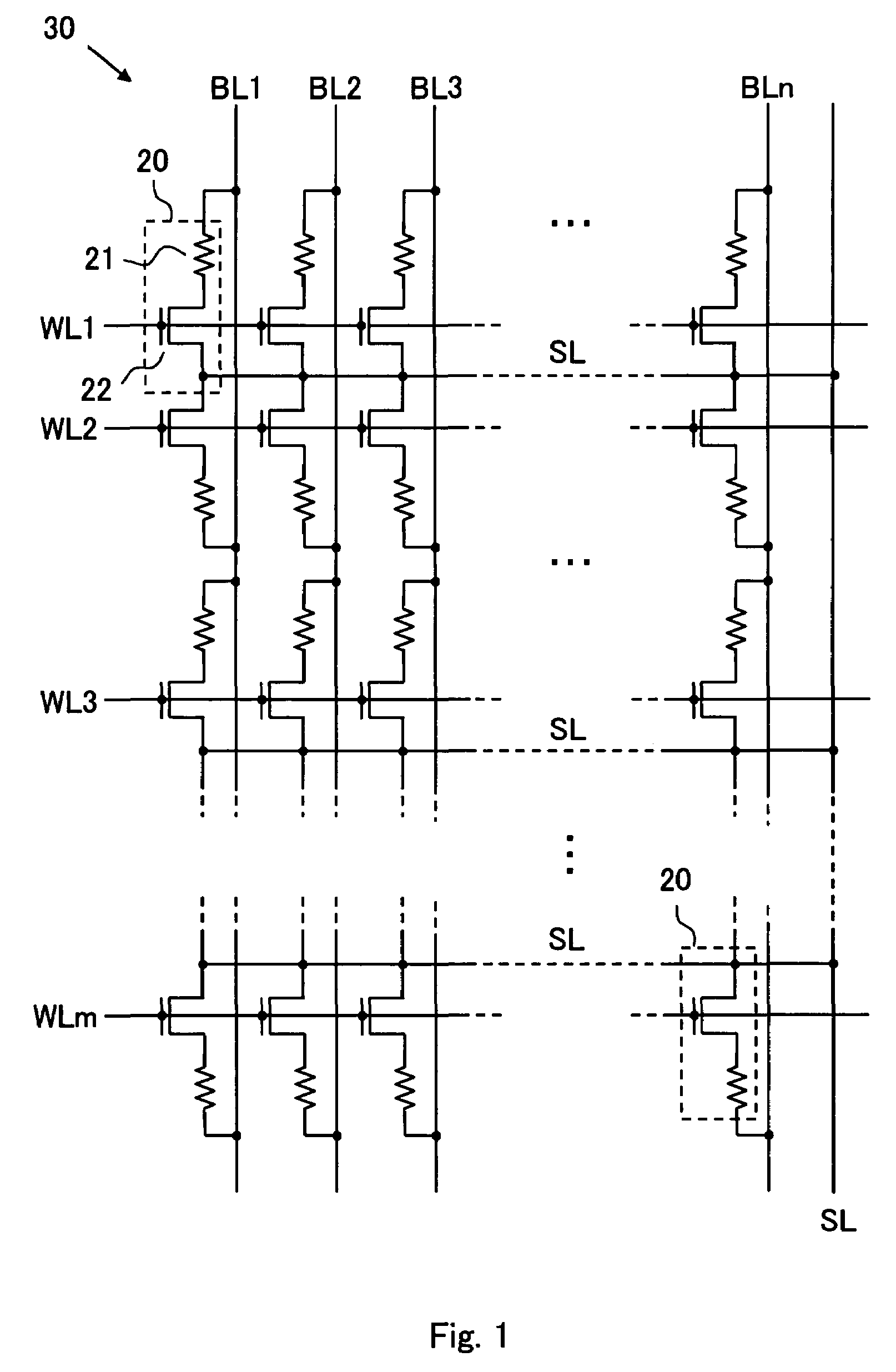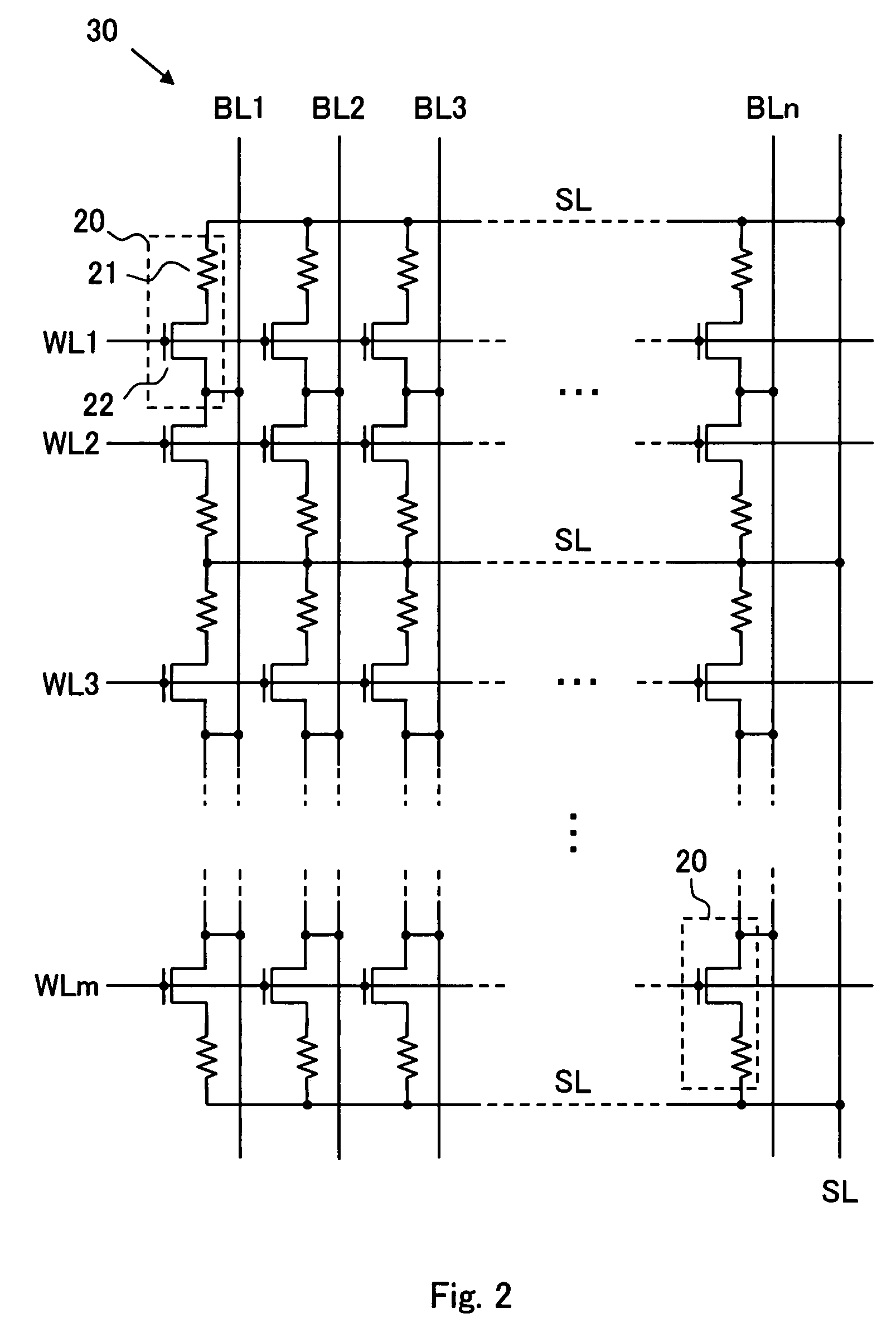Semiconductor memory device
a memory device and semiconductor technology, applied in the direction of information storage, static storage, digital storage, etc., can solve the problems of reducing reliability, hardly speeding up erasing action, and substantially taking 300 milliseconds to apply the pulsed erase voltage at step sb>3/b>, so as to minimize the overall writing time and the effect of tim
- Summary
- Abstract
- Description
- Claims
- Application Information
AI Technical Summary
Benefits of technology
Problems solved by technology
Method used
Image
Examples
first embodiment
[0064]The inventive device comprises one or more memory cell arrays 30, each memory cell array having an array of memory cells 20 arranged in rows and columns, an m number of word lines WL1 to WLm arranged along the rows and an n number of bit lines BL1 to BLn arranged along the columns for selecting one or more memory cells, and a number of source lines SL arranged along the rows, as shown in FIG. 1. The source lines SL shown in FIG. 1 extend in parallel with the word lines WL1 to WLm along the rows and are connected at one end to a common line at the outside of the memory cell array 30. Alternatively, each source line SL may be accompanied with two adjacent word lines WL or arranged to extend along the columns but not the rows. Moreover, the source lines SL may be provided separately in the memory cell array 30 and arranged for selecting one or more memory cells in conjunction with the word lines and the bit lines.
[0065]The memory cell array 30 is not limited to the arrangement of...
second embodiment
[0103]The second embodiment of the present invention will now be described. In the above first embodiment, assuming that the variable resistor element 21 of the memory cell 20 in the memory cell array 30 shown in FIG. 1 is arranged to have the writing profile shown in FIG. 5 and the writing time profile shown in FIG. 6, the requirements for applying voltage are described about the cases where some or entire of the memory cells in the memory cell array 30 are subjected at once to the erasing action and where the memory cells in the memory cell array 30 are subjected one by one to the programming action. This embodiment is different from the first embodiment in the requirements for applying voltage since both the writing profile and the writing time profile are not equal to those of the first embodiment.
[0104]It is now assumed that the memory cell array, its peripheral circuits, and the writing profile (the relationship between the polarity of the applying voltage and a change in the ...
third embodiment
[0116]The third embodiment of the present invention will be described. As described previously, the writing action of the first embodiment involves erasing at once all the memory cells to be written or repeatedly erasing at once some of the memory cells to be written, and subjecting desired ones of the erased memory cells to the programming action. However, the storage state (the resistance state of the variable resistor element) is not always uniform before the action of erasing at once the memory cells to be written. When the voltage is applied to the variable resistor elements which are different in the resistance state at the initial stage under the same condition for the erasing action, they may be varied in the erased state (at the first state of the electric resistance). Accordingly, when subjected to the programming action, the variable resistor elements will furthermore be varied in the programmed state (at the second state of the electrical resistance), hence possibly inte...
PUM
 Login to View More
Login to View More Abstract
Description
Claims
Application Information
 Login to View More
Login to View More - R&D
- Intellectual Property
- Life Sciences
- Materials
- Tech Scout
- Unparalleled Data Quality
- Higher Quality Content
- 60% Fewer Hallucinations
Browse by: Latest US Patents, China's latest patents, Technical Efficacy Thesaurus, Application Domain, Technology Topic, Popular Technical Reports.
© 2025 PatSnap. All rights reserved.Legal|Privacy policy|Modern Slavery Act Transparency Statement|Sitemap|About US| Contact US: help@patsnap.com



